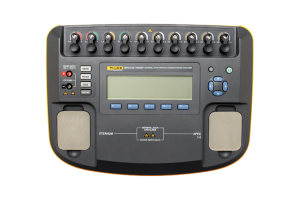Impulse 6000D/7000DP: sending test data to a PC

Introduction
You can send test data from an Impulse 6000D or Impulse 7000DP through its Computer Port to a PC. The Computer Port is a USB Interface port that looks like a COM port to a personal computer (PC).
Operating system requirement
Fluke supports connecting the Impulse to a PC running Windows XP, Vista, or a later version.
Virtual COM port
The Impulse USB port is built from an integrated circuit (IC) device that is commonly used inside adapter cables that convert USB to RS-232. When this device is connected to a PC, it looks like a COM port to the PC. When Windows enumerates the device it assigns a COM port number to it. It is called a virtual COM port (VCP).
The IC is an FT232R from the FTDI company. It is compatible with the USB Version 2.0 Full Speed specification.
The USB port may reside inside the Impulse, but the PC acts like it now has an additional COM port and that COM port is connected to an RS-232 serially connected instrument.
Once your Impulse is connected and the COM port is enumerated, you can get test data from the Impulse.
Computer cable connection
The Impulse Computer Port is a USB Device Port (peripheral) with a Type B square connector. It connects to a PC USB Controller Port that has a Type A rectangular connector.
Connect the Impulse to your PC with a standard USB Type A to Type B cable.
Windows software driver
Versions of Windows XP, Vista, and later, include a software driver for FTDI USB Serial Converters, including the FT232R. The USB ID numbers are: VID 0403 and PID 6001.
When you connect the Impulse to your PC for the first time, Windows should recognize and register your Impulse as a USB Serial Converter and USB Serial Port (COMx).
Device manager
Run Device Manager to check the status of the Impulse COM port. When viewing by Type, your Impulse shows up in two places:
- Universal Serial Bus controllers/USB Serial Converter.
- Ports (COM & LPT)/USB Serial Port (COMx).
If you view by Connection, the Impulse will be under one of the USB Root Hubs as:
- USB Serial Converter/USB Serial Port (COMx).
Advanced users
Advanced users can find more information about the FT232R from the FTDI web site: www. ftdichip.com. New software drivers, application notes, and USB utilities are available. You can learn how to view your USB connections and load and/or delete all FTDI drivers from your PC and obtain drivers for other operating systems. You can even use their D2XX direct interface API to include in your own custom interface programs if you don’t want to use a COM port.
COM port settings
Settings for the COM port should be made by the program that opens and uses the COM port such as:
- Terminal emulation program (HyperTerminal, Tera Term or other)
- Your custom Impulse connection program
- Fluke Ansur Test Automation System program
The settings in Device Manager are usually irrelevant because they are overridden by the controlling program.
The COM port should be set to:
- 115,200 baud
- No parity
- 8 data bits
- 1 stop bit
- Hardware handshaking should be turned on.
Test data
For most tests performed by the Impulse, the test data is displayed on one or more Summary screens. At each Summary screen there is a “Send” button. Press the “Send” button to send that test data out via the USB Port.
Receiving data on a PC
To get the test data on your PC, you must open that COM port and receive the data when it is sent by the Impulse.
You can use a terminal emulation program such as HyperTerminal to receive the data. Terminal emulation programs typically have ways to save incoming data to a file. It is also possible to write your own PC program to receive the data from the COM port for personalized applications.
Hyperterminal
To use HyperTerminal: Make a connection for the COM port and set it to 115,200 baud, N81, with hardware flow control. Open the connection.
When you press the “Send” button on your Impulse, you should see the test data on the terminal screen.
After receiving the test data you can mark it and copy it to the Clipboard, then paste it into a file somewhere else.
Or you can go to Transfer/Capture Text and open a file. Then all data received will go into that file. Stop the capture when you are finished; you can then use the data in the file as you please.
Note: If Device Manager only lists the USB Serial Converter but not the COM port, it could be that the Virtual COM Port driver is not enabled. Open USB Serial Converter Properties and go to Advanced. Check the Load VCP box if it is not already checked and press OK; then the COM port should appear.
Note: You can changed the COM port number assigned by Windows in Device Manager. Open the Properties for the USB Serial Port (COMx), go to Port Settings and press Advanced. Select the desired COM Port Number from the drop down list box and press OK. To get the device list to show the new COM port number perform a Scan for hardware changes.
Note: If Device Manager says that a COM port number is in use, it may be from another USB device that is no longer being used. You can click through the error message and force it to the number you want.
Note: If you unplug your Impulse, you can still see it in Device Manager by selecting View/Show hidden devices. It will appear grayed out.
